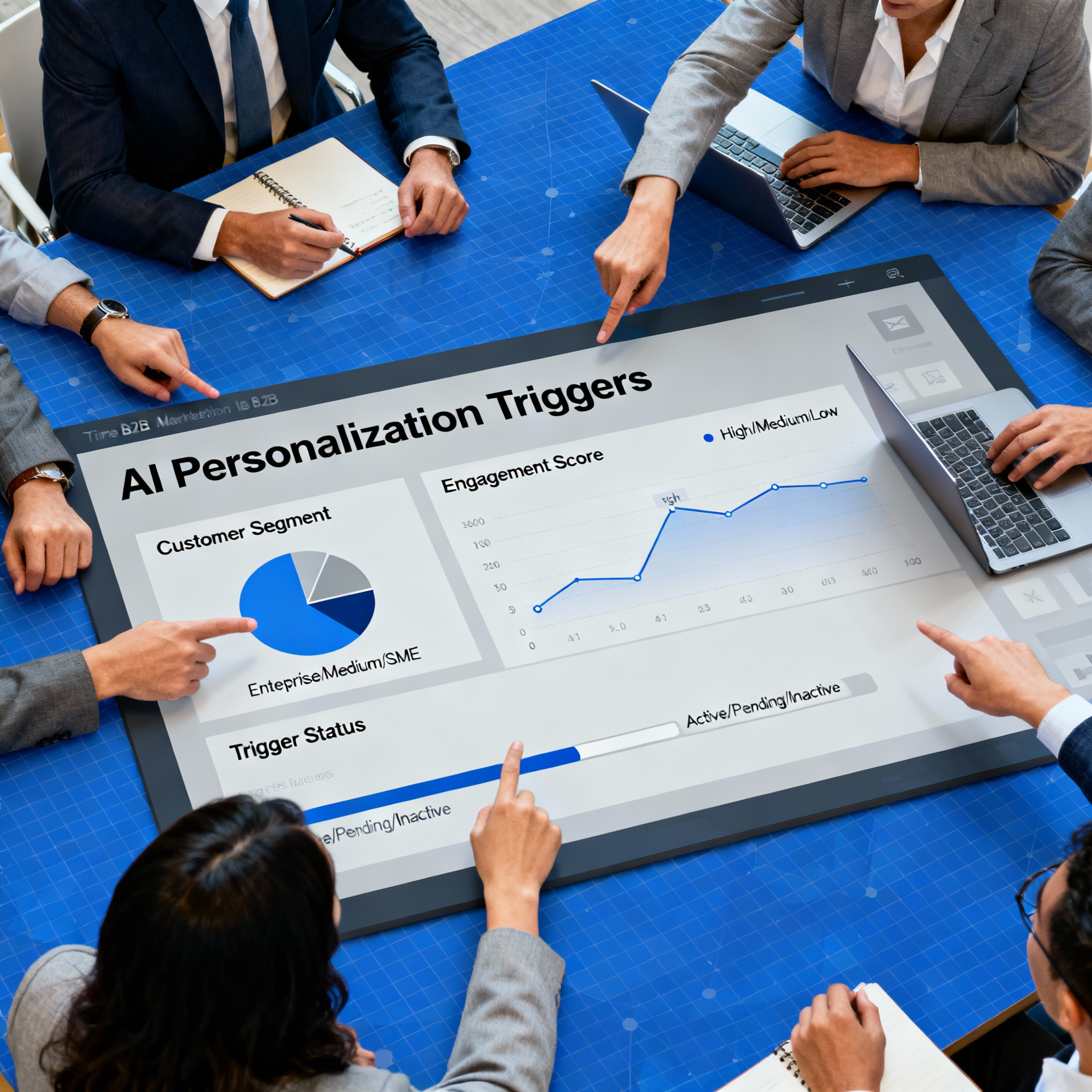
AI-driven personalization is now essential as B2B buyers demand relevant, real-time interactions tailored to their needs and stage in the journey. Buyers are no longer satisfied with generic messages or untargeted outreach; they expect dynamic, one-to-one experiences across every channel.
1. Multi-Visit Pricing Page Engagement
- What it signals: Repeated visits to pricing or plan comparison pages indicate strong, late-stage buying intent and readiness for deeper discussions.
- Activation: Trigger an industry-tailored pricing breakdown or ROI calculator. Enable instant calendar booking with an account executive, and follow up via email with a customized summary.
- Why it works: Capitalizes on high-intent moments and helps convert window shoppers into qualified opportunities.
2. Return Visits to Solution/Integration Content
- What it signals: Buyers who regularly revisit solutions pages, integration documentation, or compliance resources are evaluating technical fit and readiness to shortlist your offering.
- Activation: Swap website banners and CTAs based on observed interests (e.g., showcase case studies from the buyer’s industry), and trigger a personalized invitation to a relevant demo or sandbox.
3. Account-Level Intent Surges
- What it signals: Intent signals at the account level—such as multiple stakeholders researching your brand, spikes in third-party site visits, or targeted ad engagement—highlight buying group mobilization.
- Activation: Launch account-based marketing (ABM) sequences, custom landing pages based on segment and role, and orchestrate targeted sales follow-up with personalized assets.
4. Product Usage or Proof-of-Concept Milestones
- What it signals: A prospect achieving key POC or trial milestones (e.g., activating new features, integrating with core systems) often indicates the tipping point for successful conversion or expansion.
- Activation: Deploy success-driven messaging, in-app guides, and offer account manager check-ins precisely when these milestones are hit, reinforcing value realization and minimizing drop-off.
5. Event and Asset Engagement Spikes
- What it signals: Intense engagement—such as attending a webinar, downloading multiple assets, or revisiting thought leadership content in a short window—shows topical urgency and collective interest from the buyer’s team.
- Activation: Automatically trigger tailored follow-up: recap emails, fast-track demo invitations, and content streams that align with the asset theme and buyer’s journey stage.
How to Operationalize These Triggers
- **Centralize buyer ** Unify web, CRM, product, and third-party intent sources in a real-time platform for dynamic profiling.
- AI decisioning: Employ machine learning models to determine “next-best-actions” at each trigger, adjusting for frequency and sales context.
- Omnichannel execution: Deliver personalization across email, web, chat, ads, and sales outreach, ensuring message consistency and relevance at each touchpoint.
- Governance and fatigue management: Respect consent, cap outreach frequency, and give buyers clear controls over their personalization preferences.
Conclusion
The most successful B2B marketers in 2025 use AI not for generic segmentation, but for real-time, trigger-based personalization—aligning content, outreach, and human follow-up to observable buyer behaviors. These five triggers are proven levers for boosting conversions, pipeline velocity, and buyer trust in the modern, AI-powered funnel.

